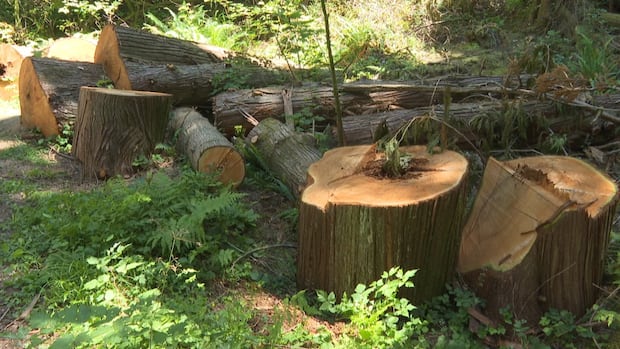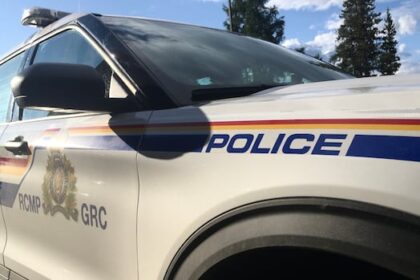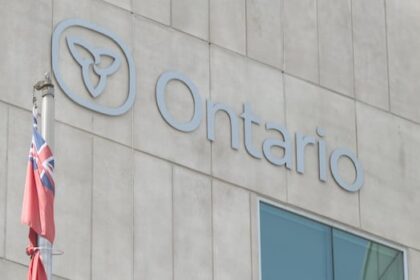British ColumbiaVancouver Park Board staff have gained commissioners’ approval to proceed with the next phase of a tree removal project being done in Stanley Park due to an extensive looper moth infestation.Removal of thousands of trees due to infested hemlocks has faced criticism for yearsAkshay Kulkarni · CBC News · Posted: Jul 21, 2025 7:00 AM EDT | Last Updated: July 21Park board commissioners on Monday approved the final phase of the yearslong tree removal work in Stanley Park. (Sohrab Sandhu/CBC )Vancouver Park Board staff have gained commissioners’ approval to proceed with the next phase of a tree removal project being done in Stanley Park due to an extensive looper moth infestation.Work has been underway to cut down thousands of trees in Vancouver’s biggest park since the summer of 2023, due to what the park board said were fire and public safety risks posed by dead and dying trees that were affected by a yearslong Western hemlock looper moth infestation.The infestation led to around a third of all the trees in Stanley Park being affected, staff said at the time, and its latest report shows just over 11,000 trees have been cut down to deal with the infestation, which was first reported in 2020.While the tree removal plan has faced sharp criticism — and some residents filed a lawsuit that ultimately failed to stop it — staff say they have a plan that will see the least number of trees removed in the final phase of the mitigation work.WATCH | Up to a third of park’s trees were affected by moths, official says: Around a third of Stanley Park’s trees killed by deadly moth outbreak: park boardA western hemlock looper moth outbreak has killed as many as 30 per cent of Stanley Park’s 600,000 to 700,000 trees, according to the Vancouver Park Board’s manager of urban forestry.”This aims to balance key public safety risks resulting from the hemlock looper outbreak while leaving a moderate extent of internal forest areas to undergo natural forest stand regeneration,” the staff motion said of its preferred approach.”These areas may require ongoing monitoring for changes over time, including but not limited to future treatment of hazardous trees and/or replanting.”The area marked in yellow, primarily in Stanley Park’s interior, will be the subject of Phase 3 of tree removal work. Staff say it constitutes around 42 per cent of the park’s forested area. (Vancouver Board of Parks and Recreation)Staff said the final phase of tree removal work will focus on around 42 per cent of the park’s area, totalling around 111 hectares primarily within the park’s interior.Those areas include trees around the Lees Trail, Lovers Walk, Tatlow Walk and trails surrounding Beaver Lake.Third Beach in Stanley Park is pictured from West Vancouver in May 2023. Vancouver’s biggest park has been undergoing tree removal and mitigation work for years in response to a prolonged looper moth infestation. (Ben Nelms/CBC)”From a public safety perspective, these trails are considered the primary target to mitigate risk from declining trees for this final phase,” the staff report reads.Park board commissioners debated the report and the final phase of the tree mitigation work at a meeting Monday evening.The staff plan ultimately passed, with only commissioner Angela Haer voting against it.Commissioner Tom Digby successfully introduced amendments to the staff plan that would see the contractor, who is conducting the tree cutting and mitigation work, retain as many dead trees and fallen logs as possible “to the extent they provide biological value for the connected ecosystem.”Work along seawall completeThe motion says higher-traffic areas — like the seawall and Stanley Park Drive — have already seen mitigation work conducted since 2023 in a phased approach.For the last phase of work, staff said they prefer an option that will see a 40-metre buffer zone around trails, where problem trees will be removed and mitigation work conducted.According to park board staff, that will have the lowest costs compared to two other options available, which would have increased the size of the buffer zone and could have increased the amount of trees being cut down.Just under $18 million has been spent on the tree removal and looper moth mitigation work since 2023.Staff did not provide an exact budget figure for the last phase of work, though they estimated the contract figure will exceed $3 million in value.Following the commissioners’ approval, planning for tree removal and mitigation work is expected to begin later this year and conclude in the first quarter of 2027.ABOUT THE AUTHORAkshay Kulkarni is an award-winning journalist who has worked at CBC British Columbia since 2021. Based in Vancouver, he is most interested in data-driven stories. You can email him at akshay.kulkarni@cbc.ca.
Vancouver Park Board staff get approval to advance Stanley Park tree removal











